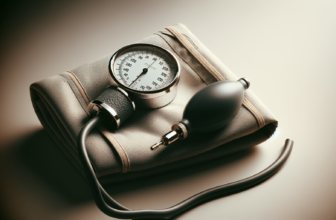What is the first thought that crosses your mind when you hear the phrase “blood pressure”? Have you ever wondered what those numbers really mean and why they matter to your health? Understanding blood pressure is essential, as it can have a significant impact on your overall well-being. In this conversation, we’re going to unpack what is considered normal blood pressure, why it matters, and how you can maintain healthy levels.
Understanding Blood Pressure
Blood pressure refers to the force of blood against the walls of your arteries as your heart pumps it around your body. It’s typically presented as two numbers: systolic and diastolic, which are measured in millimeters of mercury (mm Hg).
Systolic vs. Diastolic Blood Pressure
-
Systolic Blood Pressure: This is the first number, representing the pressure in your arteries when your heart beats. It indicates how much pressure your blood is exerting against your artery walls during the beating phase of your heart cycle.
-
Diastolic Blood Pressure: This is the second number, showing the pressure in your arteries when your heart is resting between beats. It reflects how much pressure your blood is exerting against your artery walls when your heart is not pumping.
For example, if your blood pressure reading is 120/80 mm Hg, then 120 is your systolic pressure and 80 is your diastolic pressure.
Why Blood Pressure Matters
Understanding blood pressure readings is crucial because chronic high blood pressure, also known as hypertension, can lead to serious health issues such as heart disease, stroke, and kidney damage. Conversely, low blood pressure (hypotension) can also pose risks, leading to dizziness and fainting.
What is Considered Normal Blood Pressure?
Blood pressure readings can vary, but there are established categories that help define what is considered normal and abnormal. Generally, a normal blood pressure reading is anything below 120/80 mm Hg.
Blood Pressure Categories
Here’s how blood pressure readings are categorized:
| Category | Systolic (mm Hg) | Diastolic (mm Hg) |
|---|---|---|
| Normal | Less than 120 | Less than 80 |
| Elevated | 120-129 | Less than 80 |
| Hypertension Stage 1 | 130-139 | 80-89 |
| Hypertension Stage 2 | 140 or higher | 90 or higher |
| Hypertensive Crisis (Emergency) | Higher than 180 | Higher than 120 |
What Do These Numbers Mean for You?
If your blood pressure falls within the “normal” range, congratulations! Maintaining these levels is crucial for your health. However, if you find yourself in the elevated category or beyond, it may be time to reassess your lifestyle choices or consult a healthcare provider for further evaluation.
Factors Influencing Blood Pressure
Many factors can influence your blood pressure, and understanding them can help you maintain a healthy range.
Genetic Factors
Your family history plays a significant role in your blood pressure. If hypertension runs in your family, you may be at a higher risk of developing it yourself.
Age and Gender
As you age, your blood vessels may become stiffer, leading to increased blood pressure. Additionally, pre-menopausal women typically have lower blood pressure compared to their male counterparts. However, post-menopause, women’s blood pressure often rises and can surpass men’s levels.
Lifestyle Choices
Your daily habits greatly influence your blood pressure levels. Factors like diet, exercise, alcohol consumption, and smoking play a crucial role.
Diet
Consumption of high sodium foods can lead to increased blood pressure. Conversely, eating a balanced diet rich in fruits, vegetables, whole grains, and lean proteins can help maintain healthy blood pressure levels.
Physical Activity
Regular physical activity strengthens your heart and improves blood circulation, which can help lower your blood pressure. Aim for at least 150 minutes of moderate exercise each week.
Alcohol and Tobacco Use
Heavy drinking can raise your blood pressure. On the other hand, quitting smoking can lead to significant improvements in your overall health and reduce your risk of heart disease.
Stress
Chronic stress can contribute to increased blood pressure. Finding effective ways to manage stress, like practicing mindfulness or engaging in relaxing activities, can be beneficial.
How to Measure Your Blood Pressure
It’s important to know how to measure your blood pressure accurately to keep track of your health.
Using a Home Blood Pressure Monitor
Investing in a home blood pressure monitor can help you keep track of your health. Here are a few steps to measure your blood pressure at home:
-
Preparation: Make sure to rest for at least five minutes before taking a measurement. Avoid caffeine or nicotine beforehand.
-
Seating: Sit in a comfortable chair with your feet flat on the ground and your arm supported at heart level.
-
Applying the Cuff: Place the cuff around your upper arm. The bottom edge of the cuff should be about an inch above the crease of your elbow.
-
Taking the Measurement: Follow the instructions of your blood pressure monitor. Once it takes the reading, record your systolic and diastolic numbers.
-
Repeat if Necessary: It’s a good idea to take two or three readings and average them.
Getting Measured at the Doctor’s Office
While home monitoring is helpful, regular check-ups with your healthcare provider are essential. They can ensure that you’re using your home device correctly and interpret your readings within the context of your overall health.
When to Seek Medical Advice
If you consistently find that your blood pressure readings fall within the elevated or hypertension categories, it’s important to consult your doctor. They can provide personalized advice and recommend lifestyle changes or medication if necessary.
Recognizing Symptoms of Hypertension
Often, high blood pressure has no noticeable symptoms. However, in more severe cases, you may experience:
- Headaches
- Shortness of breath
- Nosebleeds
- Flushing
- Dizziness
If you experience any of these symptoms along with high blood pressure readings, seek medical attention promptly.
Strategies for Maintaining a Healthy Blood Pressure
Empowering yourself with the right strategies can help you maintain healthy blood pressure levels. Here are some effective methods.
Adopt a Heart-Healthy Diet
Following a diet rich in whole foods can significantly impact your blood pressure. Here are key recommendations:
-
Reduce Sodium Intake: Aim for less than 2,300 mg of sodium a day, and ideally limit it to 1,500 mg for better control.
-
Eat More Fruits and Vegetables: Aim for at least 5 servings of fruits and vegetables daily. They are packed with nutrients and fiber.
-
Choose Whole Grains: Brown rice, whole wheat bread, and oats can contribute to overall heart health.
-
Limit Sugars and Saturated Fats: Minimize processed foods and added sugars which contribute to higher blood pressure.
Stay Physically Active
Being active can lower your blood pressure significantly. Here are some tips to incorporate exercise into your routine:
-
Find Activities You Enjoy: Whether it’s walking, cycling, dancing, or swimming, make it something fun rather than a chore.
-
Set Goals: Start with achievable goals, such as 30 minutes of moderate activity most days of the week.
-
Incorporate Movement Into Daily Life: Small changes, like taking the stairs instead of the elevator, can add up.
Manage Stress
Finding ways to reduce stress can bolster your heart health. You can:
- Practice Mindfulness or Yoga: These practices promote relaxation and can help lower blood pressure.
- Engage in Social Activities: Spending time with friends and family can provide emotional support and reduce stress.
- Ensure Adequate Sleep: Prioritize sleep as it plays a role in maintaining blood pressure.
Regular Check-Ups
Staying on top of your health with regular check-ups is imperative. Your doctor can provide valuable insights into your blood pressure and overall health, tailoring advice just for you.
The Role of Medication
If lifestyle changes alone are not enough, your doctor may recommend medication to manage your blood pressure. There are several types available, and the choice depends on various factors, including your health status and how well you’re managing your blood pressure.
Common Classes of Blood Pressure Medications
| Type of Medication | Function |
|---|---|
| Diuretics | Help kidneys remove excess sodium and water |
| ACE Inhibitors | Relax blood vessels, lowering blood pressure |
| Angiotensin II Receptor Blockers | Prevent blood vessel narrowing |
| Calcium Channel Blockers | Relax and widen blood vessels |
| Beta-Blockers | Reduce heart rate and the power of your heart’s contractions |
Taking Medications Safely
If prescribed, ensure you take your medications as directed. Discuss any side effects with your healthcare provider, and never stop taking medication without guidance.
Conclusion
Understanding what is considered normal blood pressure is not just about knowing the numbers; it’s about empowering yourself to make informed decisions regarding your health. You have a range of lifestyle options to maintain or achieve that healthy blood pressure, and knowing your categories can help you take proactive steps.
Whether you’re in the normal range or looking for ways to improve, begin by considering your current habits and make small, meaningful changes. Regular check-ups will further help you stay on top of your health. After all, maintaining a healthy blood pressure is a vital part of your journey toward a healthier, happier you!
Don’t forget, every little step counts, and you have the capability to influence your health positively.







